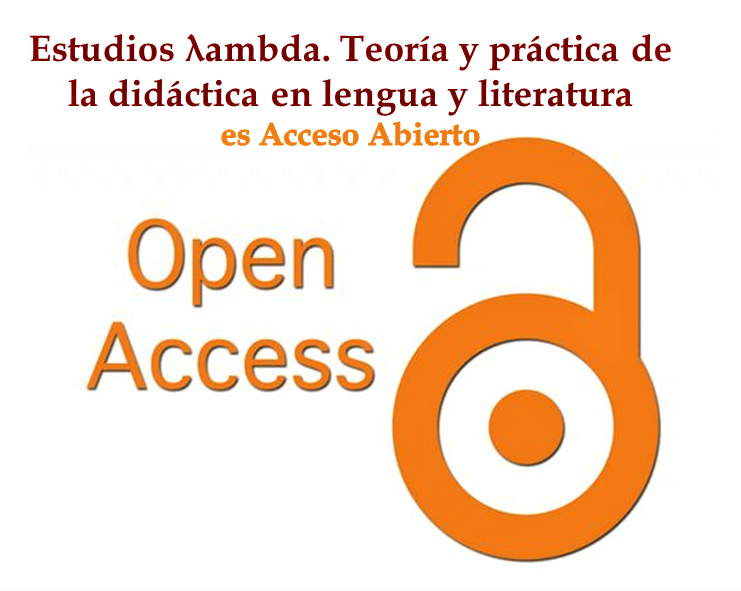Why Film for the Study of Literature
Why Film for the Study of Literature
DOI:
https://doi.org/10.36799/el.v1i1.31Keywords:
Comparative literature, film analysis, literature analysisAbstract
This article, first part of a comparison between two semiotic systems, narrative and film, stops at the two most important semiotic systems of film to be analyzed: image, audio, theatre, story, and edition. My basic assumption as hypothesis is that films among other approaches to narrative analysis offers the best methodological instrument and/or tool for the study of literature. I make allusion to the common elements to film and to the literary narrative trying to compare, contrast and confirm the support that one medium allows the one to understand the other through three moments. First, the not polemic elements (and in them I stop for the moment). Second, those not easily acceptable (to be studied in a second turn or part of this study). And in third place, the really polemic series (last time of this study). The shared elements in film and in literature are: beginning, image, sound, time, space, edition narrator, narration, misse en scène, gender, language, intertext, ideology and finally the end. The comparison starts from the perspective of the didactics of language and literature. Theoretical mark corresponds mainly to the postulates by Lauro Zavala in his courses about the Theory of literature and film, those classic studies in film like Bazin, Casetti and Di Chio, Sánchez Noreiga. I also make reference to the classical theories in narratology: Aristotle, Genette, Greimas, Todorov, among others.
Downloads
References
Bourdieu, Pierre y Jean Claude Passeron. La reproducción. Elementos para una teoría del sistema de Enseñanza 2a. ed. Barcelona: LAIA, 1996.
Branigna, E. R. Point of View in the Cinema. A Theory of Narration and Subjectivity in Classical Film. Prólogo de David Bordwell. Berlín: Mouton, 1984.
Burke, Peter. History and Social Theory (Second Edition). Ithaca: Cornell University Press, 2005. Print.
Cassetti Francesco y Federico Di Chio. Cómo se analiza un film. Barcelona: Paidos, 1990.
Clark, Elizabeth A. History, Theory, Text: Historians and the Linguistic Turn. Cambridge, Mass.: Harvard University Press, 2004.
Eagleton, Terry. Una introducción en la teoría literaria. Trad. José Esteban Calderón. México: Fondo de Cultura Económica, 1988.
Genette, Gerard. Palimpsestos. Trad. Celia Fernández Prieto. Madrid: Altea, Taurus, Alfaguara, 1989.
Gómez, Pedro Arturo. “Imaginarios sociales y análisis sociales. Una aproximación a la construcción narrativa de la realidad”. Cuadernos no. 17. FHYCS-UN. Junio, 2001.
González-Gaxiola, Francisco. “Por qué terminan las historias”. Ruta Crítica (2007): 177-197
Hjelmslev, Louis. Prolegómenos a una teoría del lenguaje. Madrid: Gredos, 1971.
Jameson, Fredric. The Political Unconscious. Narrative as a Socially Symbolic Act (5a. ed). Ithaca, Nueva York: Cornell University Press, 1988.
Kermode, Frank. The Sense of an Ending: Studies in the Theory of Fiction. Oxford: Oxford University Press, 1967.
Metz, Christian. Film Language: A Semiotics of the Cinema. Chicago: University of Chicago Press, 1990.
Mora, Martín. “La teoría de las representaciones sociales de Serge Moscovici”. Athenea Digital num. 2. Otoño 2002.
Neupert Richard. The End: Narration and Closure in the Cinema. Contemporary Approaches to Film and Media Series. Wayne State University Press, 1995.
Nünning, Vera. “Beyond Indifference: New departures in British Fiction at the Turn of the 21st. Century”. Beyond Postmodernism: Reassessments in Literature, Theory, and Culture. Ed. Klaus Stierstorfer. Berlin: Walter de Gruyter, 2003.
Sánchez Noriega, José Luis. De la literatura al cine. Teoría y análisis de la adaptación. Barcelona: Paidós, 2000 (Paidós comunicación, 118).
Segre, Cesare. Principios de análisis de texto literario. Barcelona: Crítica, 1985.
Todorov, Tzvetan. Mikhail Bakhtine: Le principe dialogique. París: Seuil, 1981.
Toulmin, Stephen. Los usos de la argumentación. Trad. María Borrás y Victoria Pineda. Barcelona:
Ediciones Península, 2007.
Veronese Micaela. Le soglie del film. Inizio e fine nel cinema. Turin: Kaplan, 2005.
Zavala, Lauro. “Cine y literatura. Puentes, analogías y extrapolaciones.” Razón y literatura. 2009. www.razonypalabra.org.mx
Zavala, Lauro. “La traducción intersemiótica en el cine de ficción”. Ciencia, ergo-sum. México: UAN, Xochimilco, 2008.
http://cienciaergosum.uaemex.mx/index.php/ergosum/article/view/1174
Downloads
Published
How to Cite
Issue
Section
License
El autor o autores conservan en todo momento sus derechos morales y patrimoniales sobre la obra; la obra no se puede alterar, transformar o ampliar; siempre debe reconocerse la autoría del documento referido. Ninguna de las modalidades de los documentos publicados en Estudios λambda. Teoría y práctica de la didáctica en lengua y literatura tienen fines comerciales de naturaleza alguna.



